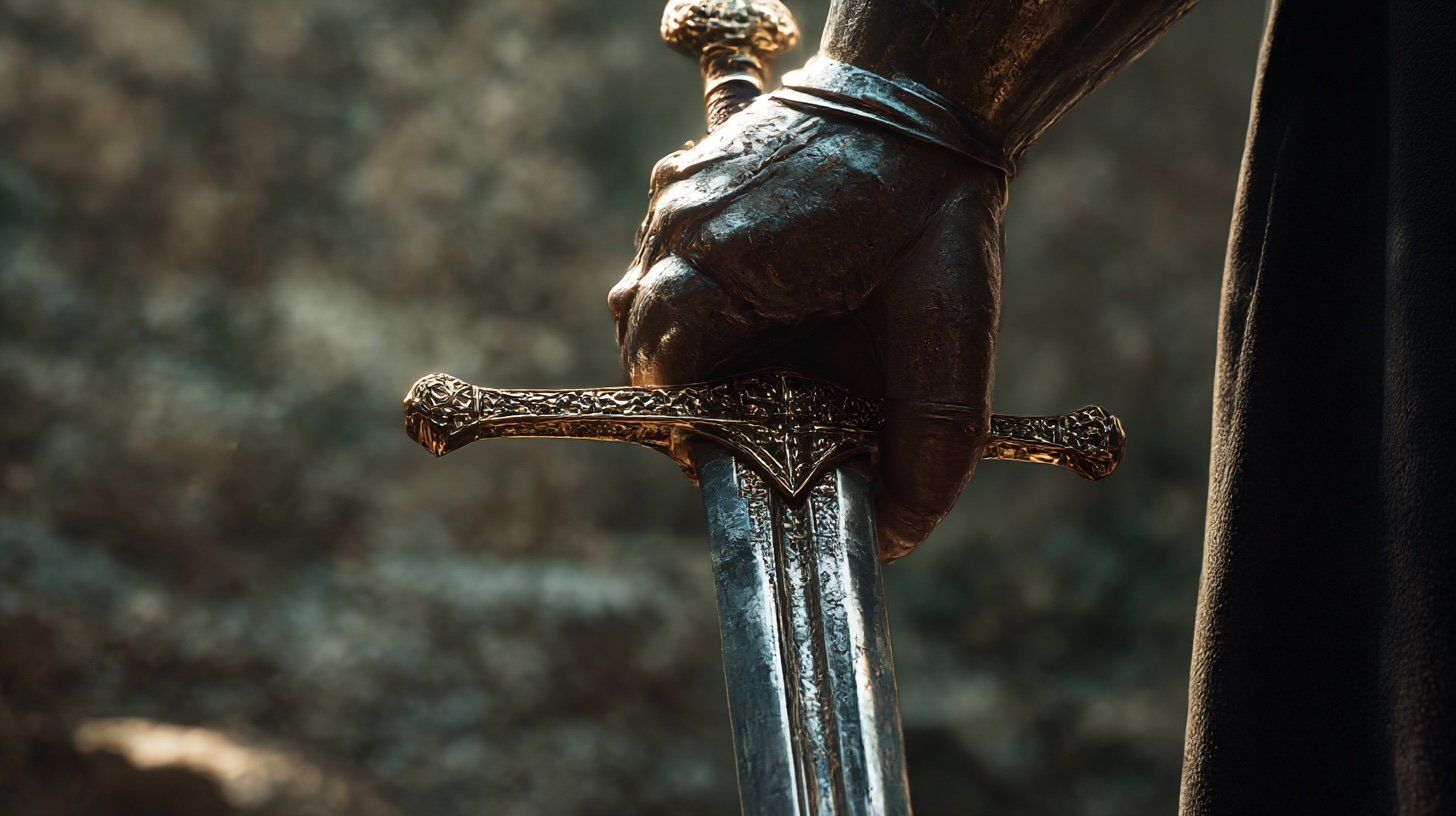Excalibur: The Saga of Arthur’s Favourite Pointy Thing
Let’s get one thing straight: if you hear the word “Excalibur” and don’t immediately think of a sword glowing with unearned heroism and dubious geological origins, then we’re going to have a problem. Excalibur is one of those cultural objects that refuses to behave. It slips between history, myth, politics, and Monty Python sketches like a buttered eel in chainmail. But that’s precisely why it still matters.
Arthurian legend without Excalibur is like a roast dinner without gravy—still substantial, but unreasonably dry. So yes, let’s talk about Excalibur, not just the sword but the beast of a concept it has become. And let’s admit it up front: Excalibur was never just a sword. It was destiny, legitimacy, magical hardware, and PR campaign all rolled into one.
The first thing to get out of the way is that there are, confusingly, two famous swords in Arthurian lore. One is the Sword in the Stone—that rock-clinging piece of metal that only the true king could pull out, proving he was not just some guy in a tunic with opinions. The other is Excalibur, given to Arthur by the Lady of the Lake. And yes, plenty of medieval texts mix them up or merge them, because medieval writers were big fans of plot holes.
Let’s back up. The name “Excalibur” comes from the Old French “Escalibor,” which was mangled from the Latin “Caliburnus,” which was itself probably filched from the Welsh “Caledfwlch.” That last one sounds like someone sneezed during a Scrabble game, but it roughly means “hard cleft” or “battle breach.” Lovely. It also may be related to the Irish sword “Caladbolg,” which could cleave hills in half. That’s right: Excalibur has cousins. Mythical ones. With landscaping powers.
People often think of Excalibur as shining, glowing, doing a bit of sabre-rattling by moonlight. But one of its earliest superpowers wasn’t light, it was scabbard-related. According to some versions, the scabbard, not the blade, was the real game-changer—while you wore it, you couldn’t bleed out. Magical anti-haemorrhage sheath? Now that’s innovation. Naturally, Arthur lost it. Probably left it in a tavern. Or Mordred nicked it. Sources vary.
The Lady of the Lake, who gives Arthur Excalibur, is herself a category-five mystery. Sometimes she’s Nimue. Sometimes Viviane. Sometimes unnamed, yet extremely dramatic. She lives in an underwater castle, as one does. She appears, hands a sword out of the water like some supernatural vending machine, and is never overly interested in logistics.
Excalibur is not just British literary property. It was part of French romances too, particularly the work of Chrétien de Troyes, who helped medieval literature overdose on knights and doomed quests. Later, Sir Thomas Malory’s 15th-century mashup, Le Morte d’Arthur, turned Excalibur into the sword of swords. Malory, let’s be honest, was the kind of writer who thought, “Why have one quest when you can have forty and a death scene?”
Speaking of death scenes, Arthur’s end is a whirlpool of drama. Mortally wounded at the Battle of Camlann, he tells someone (usually Sir Bedivere, who is not exactly swift on the uptake) to throw Excalibur back into the lake. Bedivere, understandably, thinks, “Toss a priceless magic sword into a pond? Are you mad?” and hides it twice. On the third try, he finally throws it, and a hand emerges from the water, grabs the sword, and disappears. Smooth.
That bit’s cinematic gold. No wonder every filmmaker from John Boorman to Guy Ritchie has had a crack at it. Excalibur has been forged, re-forged, digitally enhanced, and occasionally turned into a motorbike name. There’s something irresistible about it. The idea that power can be bestowed by something other than inheritance or brute force—say, a mysterious watery arm—is deeply appealing.
Historians, of course, have tried to track down the “real” Excalibur. Was it inspired by a Roman gladius? A Celtic ceremonial weapon? A prop left behind after a Druid open mic night? We’ll never know. But that hasn’t stopped archaeologists from poking around Welsh lakes and English fens, or souvenir shops in Tintagel.
Fun fact: in 2017, a seven-year-old girl found a sword in a lake in Cornwall. Headlines screamed EXCALIBUR FOUND, ignoring the more probable explanation of “discarded theatrical prop.” Still, the Excalibur effect was in full force. People wanted it to be true. That’s the power of myth. Or good marketing.
The sword’s fame also spawned real-world namesakes: hotels, comic books, even a 15th-century French warship. There are towns in Canada and Oklahoma named Excalibur. No word on whether they came with enchanted lakes.
And let’s not forget how democratic Excalibur has become. Once reserved for kings and chosen ones, it’s now available in plastic, foam, and stainless steel replica on Amazon. With LED lights if you’re feeling fancy.
Excalibur represents the idea that power should be earned or granted for virtue, not seized or inherited. Which is rich, considering how many awful kings England got anyway. But still, it sets the bar.
There’s a reason Excalibur refuses to rust in cultural memory. It’s not about metallurgy, but hope. Hope that somewhere out there, there’s a sword (or a metaphor) that can make sense of chaos, bestow authority without corruption, and maybe look photogenic while doing it. That, and it looks great on a t-shirt.
So the next time someone brings up Excalibur, remember: it’s not just a pointy stick with a backstory. It’s the original plot device with flair. An antique lightsaber with Arthurian software. A symbol that says maybe, just maybe, the lake will give you a second chance. Or at least a sword you didn’t earn but definitely needed.
